With names referencing death and destruction, it’s no wonder the Amanita mushroom genus contains some of the most famous and deadly of all poisonous mushrooms. The death cap (Amanita phalloides) is suspected to have caused more mushroom poisoning deaths than any other species!
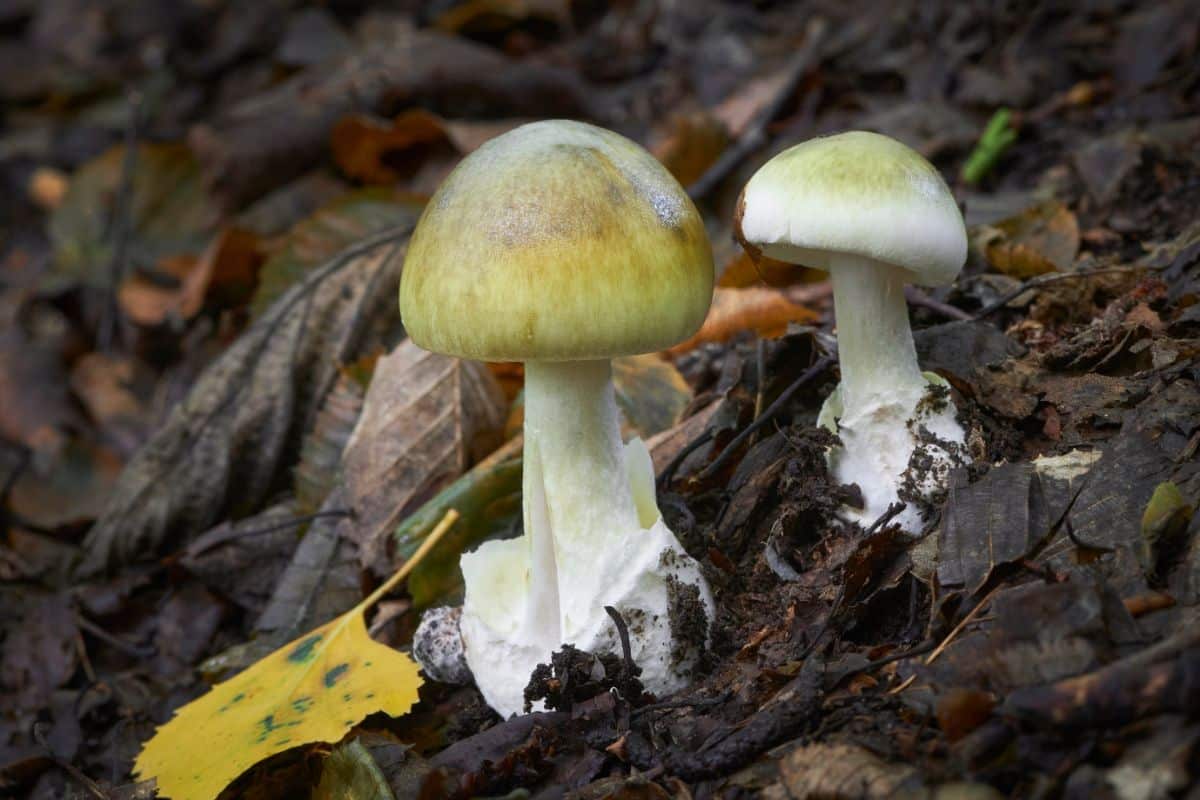
Jump to:
Amatoxin 101
Yet what makes some amanita mushrooms so poisonous? Certain species of Amanita contain amanitin, a deadly amatoxin.
Amatoxins are some of the most lethal poisons found in nature. These toxins work by slowly shutting down the liver and kidneys. Often the victim will appear sick at first, and then seem to get better. Unfortunately the amatoxins are still at work, and death may occur anywhere from a few days to a week after ingestion.
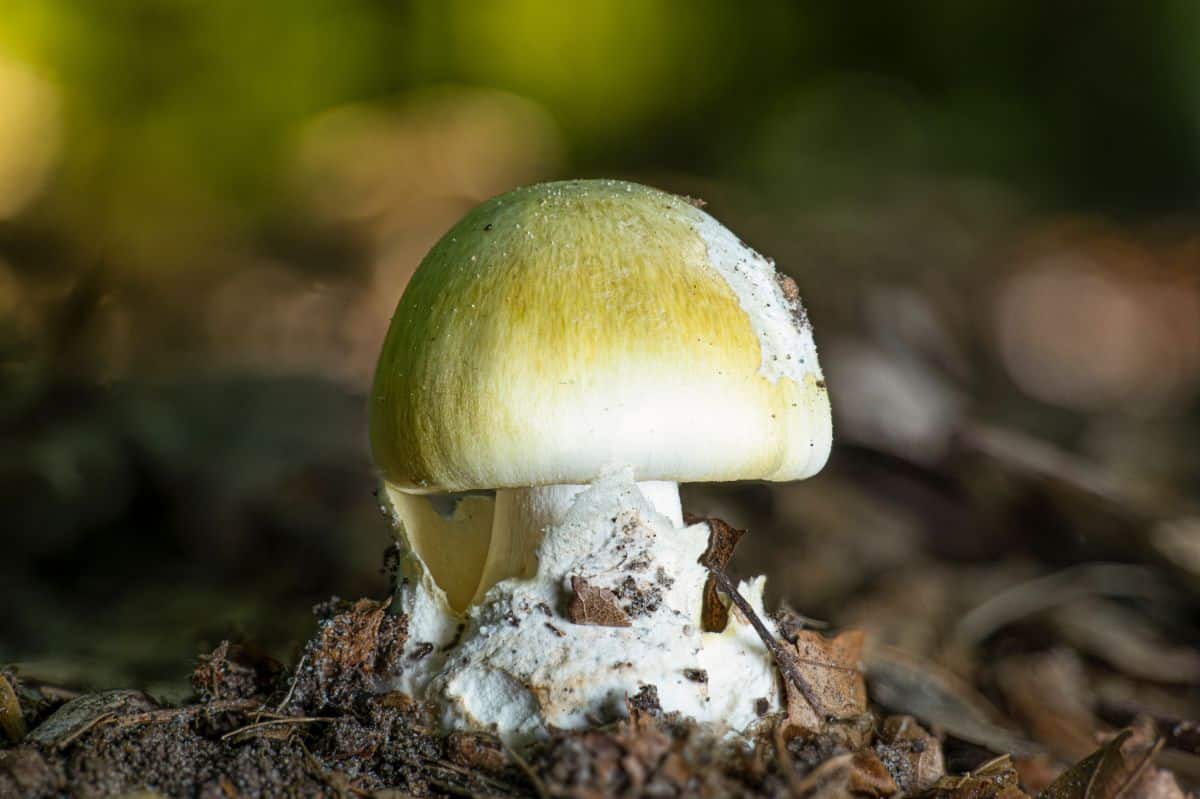
This poison knows no real antidote beyond treating the victim with an extract of milk thistle. Milk thistle protects against liver damage from toxins, and is one of the treatments for amanita mushroom poisoning.
Despite this treatment, it’s said that one cap of a death cap is enough to kill. Given the danger, we’d better learn some poisonous mushroom identification! Visit this page to learn how to identify poisonous amanita mushrooms in general.
Remember: Never solely identify any mushroom based on what you’ve seen on any website (including this one) or by comparing it to a picture in a book. Always obtain hands-on expert help when identifying a new mushroom and never eat anything you’re not sure of!
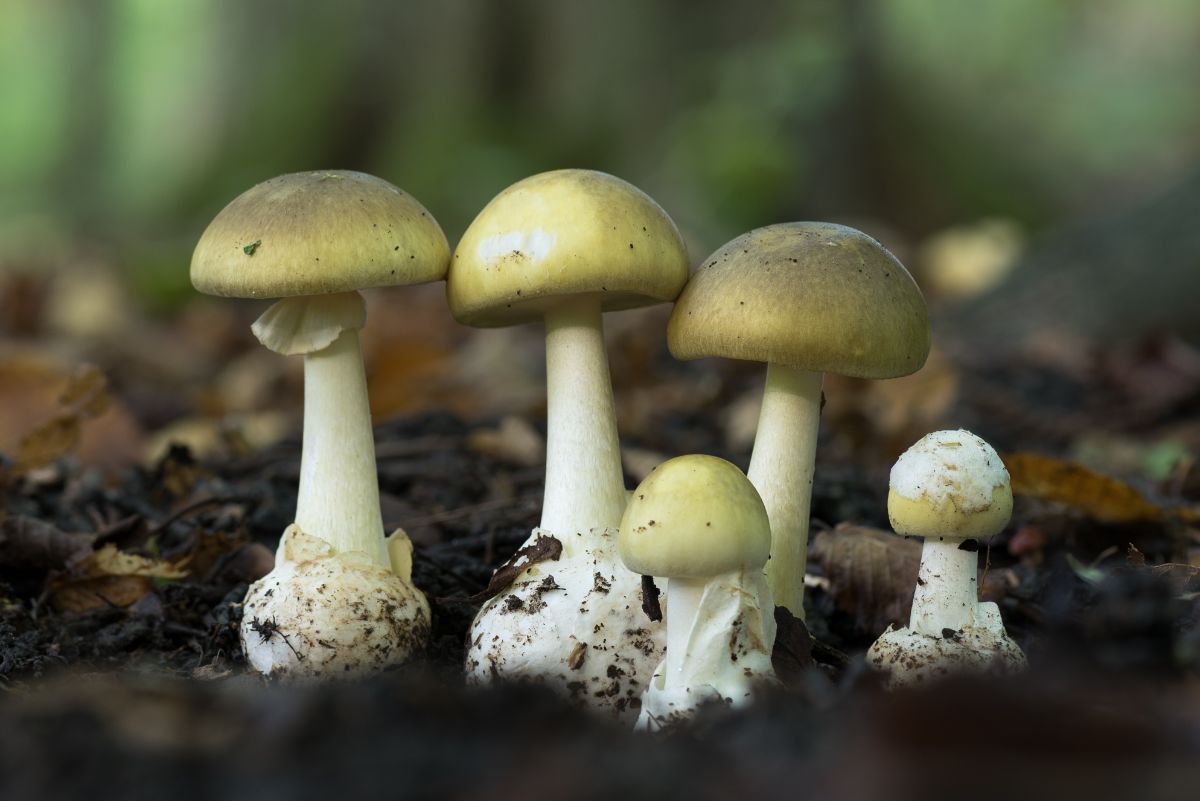
Death Cap Details
Cap
- Between 3 to 6 inches across
- Convex initially but flattens with age, often sticky when touched
- Color is usually a shade of yellow to green, but sometimes white or brownish
- White gills underneath the cap that don’t run down the stem
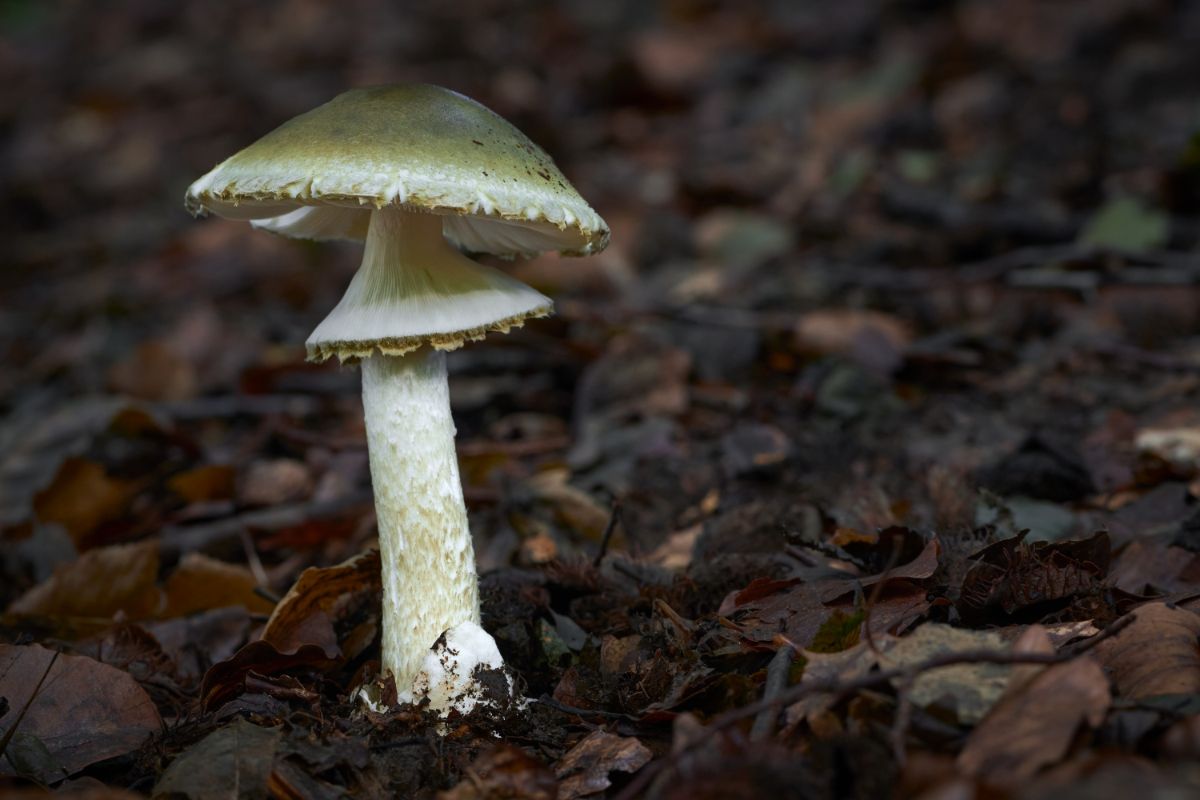
Stem
- Between 3 to 6 inches across and less than an inch thick
- Usually whitish, sometimes with scales
- Often a ring around the stem right below the cap. This ring is the remnant of the partial veil, a piece of tissue that protected the mushroom’s gills as it grew.
- Also present is a white sac around the base of the stem. All amanita mushrooms start their lives as small buttons in the shape of an egg. This egg-like covering is actually a layer of tissue called the universal veil, or volva.
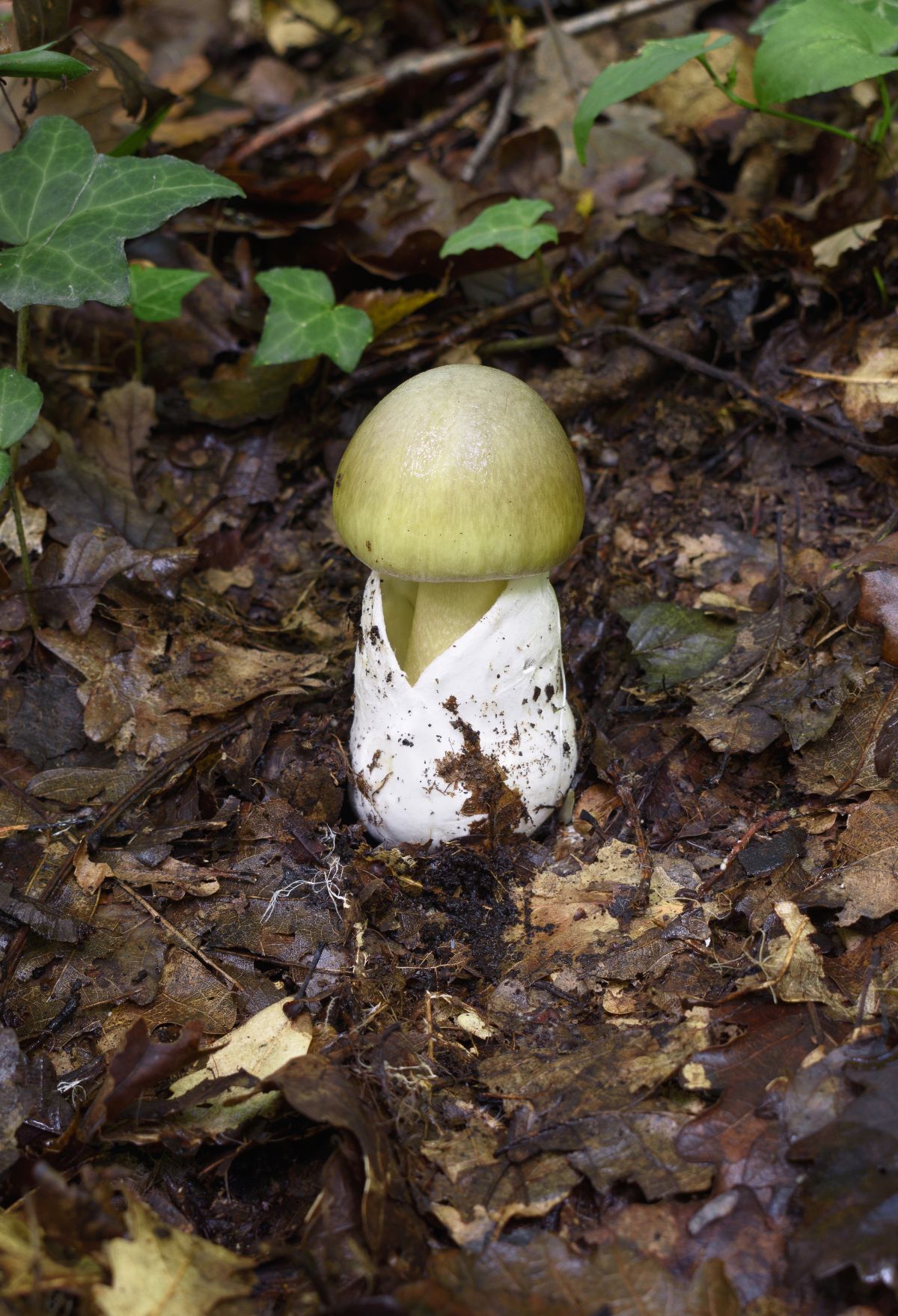
Because they form as a small button, an amanita may sometimes be mistaken for an edible puffball. This is why it’s essential to slice a puffball open before eating it. Puffballs are white and solid on the inside with no gills. If you see gills, you may have an amanita on your hands.
Once the mushroom has grown, the sac-like remnants of this universal veil are still an important identification characteristic. It’s often underground so you may have to dig carefully around the base to find it.
However, never assume that you don’t have an amanita mushroom just because you can’t find the sac. It may have disintegrated or broken away. Use all features for poisonous mushroom identification, not just one!
Spore print
White
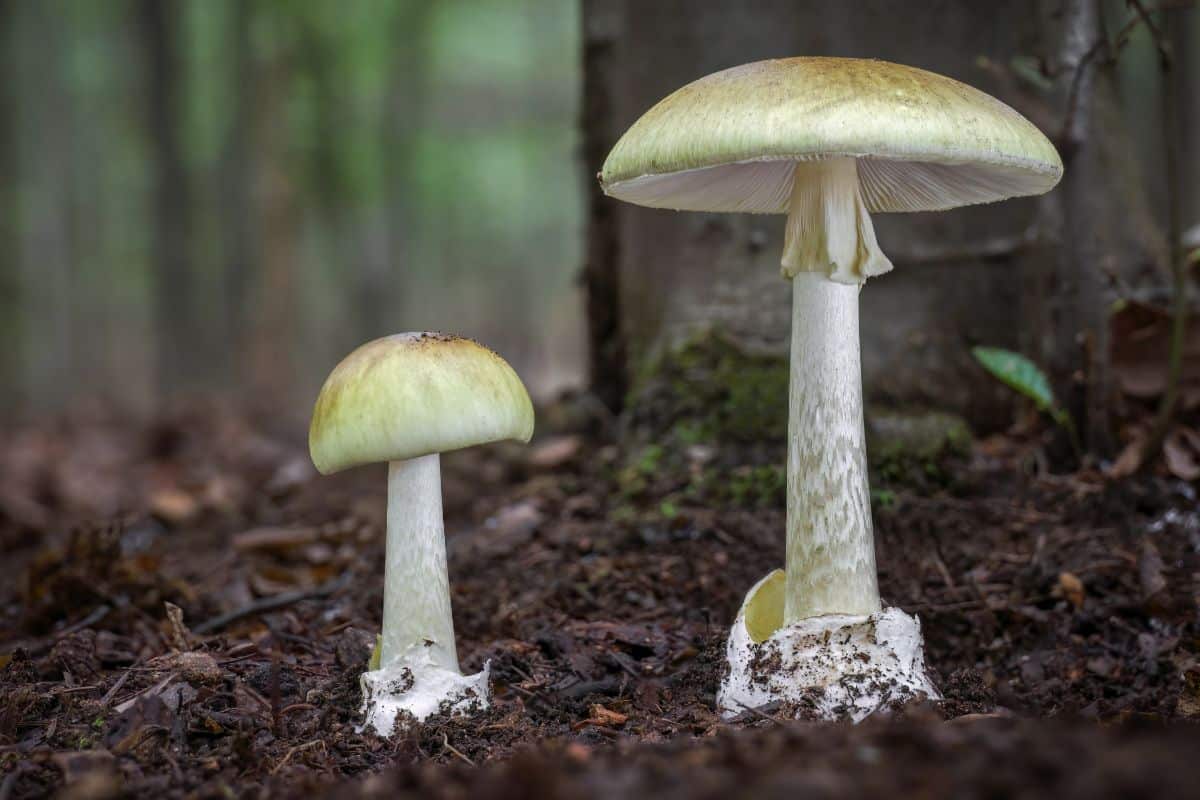
Habitat
- The death cap, like all Amanita species, is suspected to be mycorrhizal. This means the mycelium of the mushroom forms a symbiotic relationship with the roots of trees. For this reason they are found on the ground in the woods, although occasionally they will occur in grassy fields.
- Often found near oak and pine trees. Sometimes seen near other hardwoods such as chestnut, beech, birch, and spruce.
Time of year
Late August through November, or whatever passes as late-summer to late fall in your area.
Distribution
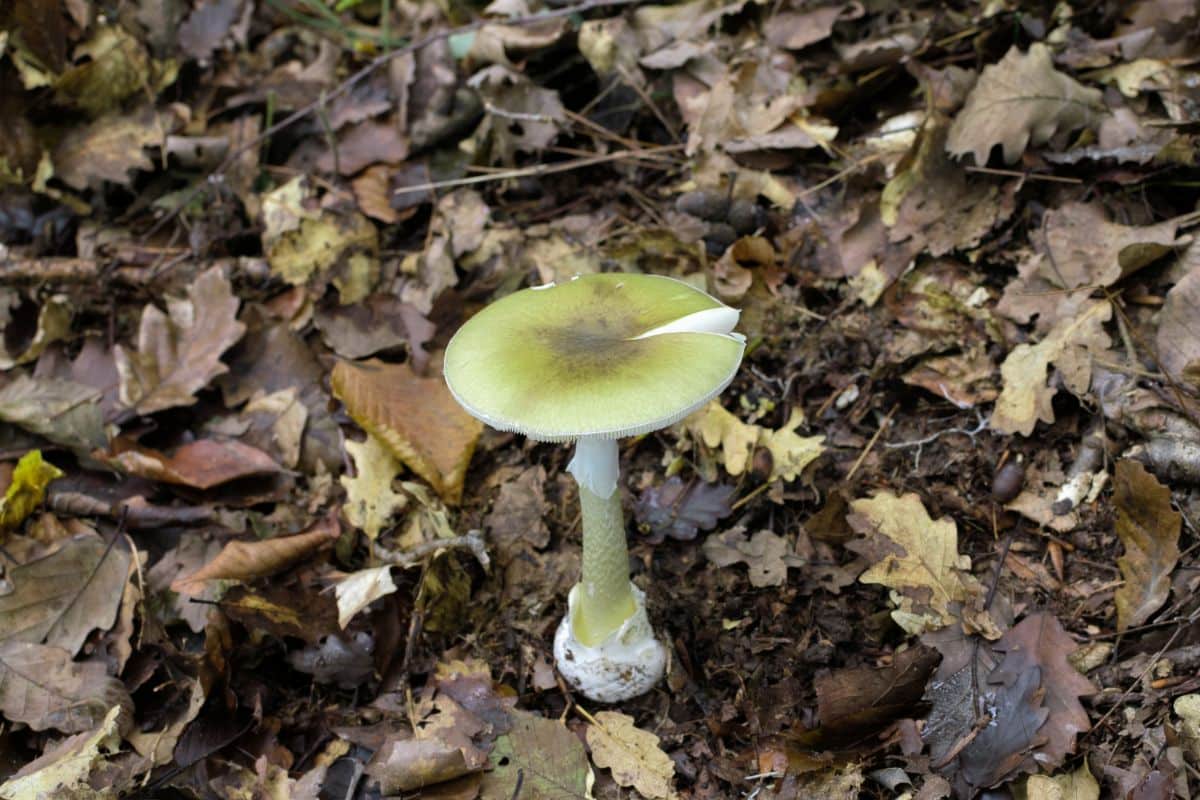
- The death cap is originally a European mushroom, and is found throughout Europe and parts of North Africa.
- The species was introduced to North America and is most often seen in California. However, there are reports of it in many other states including Pennsylvania, Ohio, and parts of the East Coast. Shipping wood, lumber, and live seedlings has introduced the species to other parts of the world, such as Australia and parts of South America.
- Assume the death cap, or some other poisonous mushroom, lives where you live!
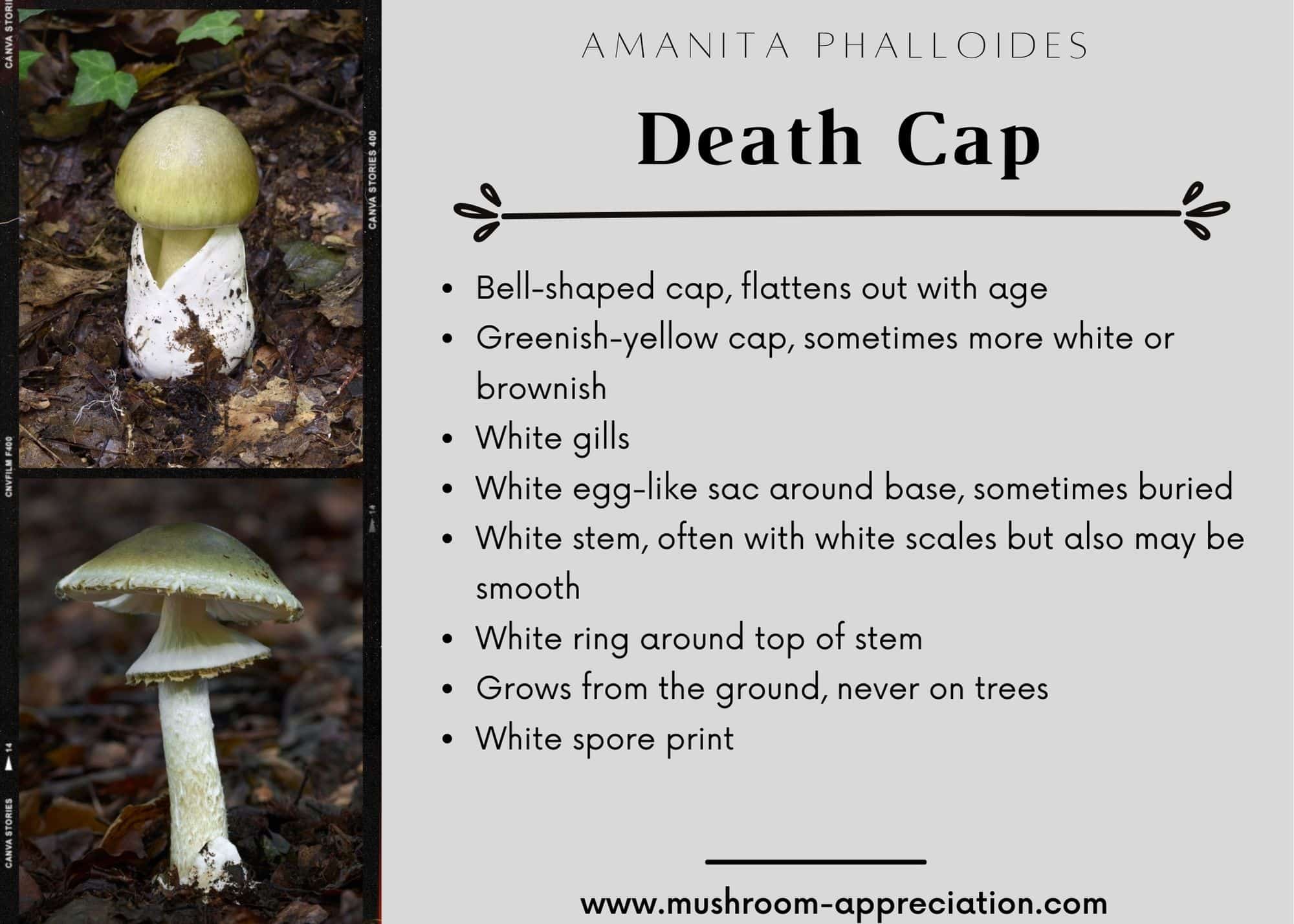
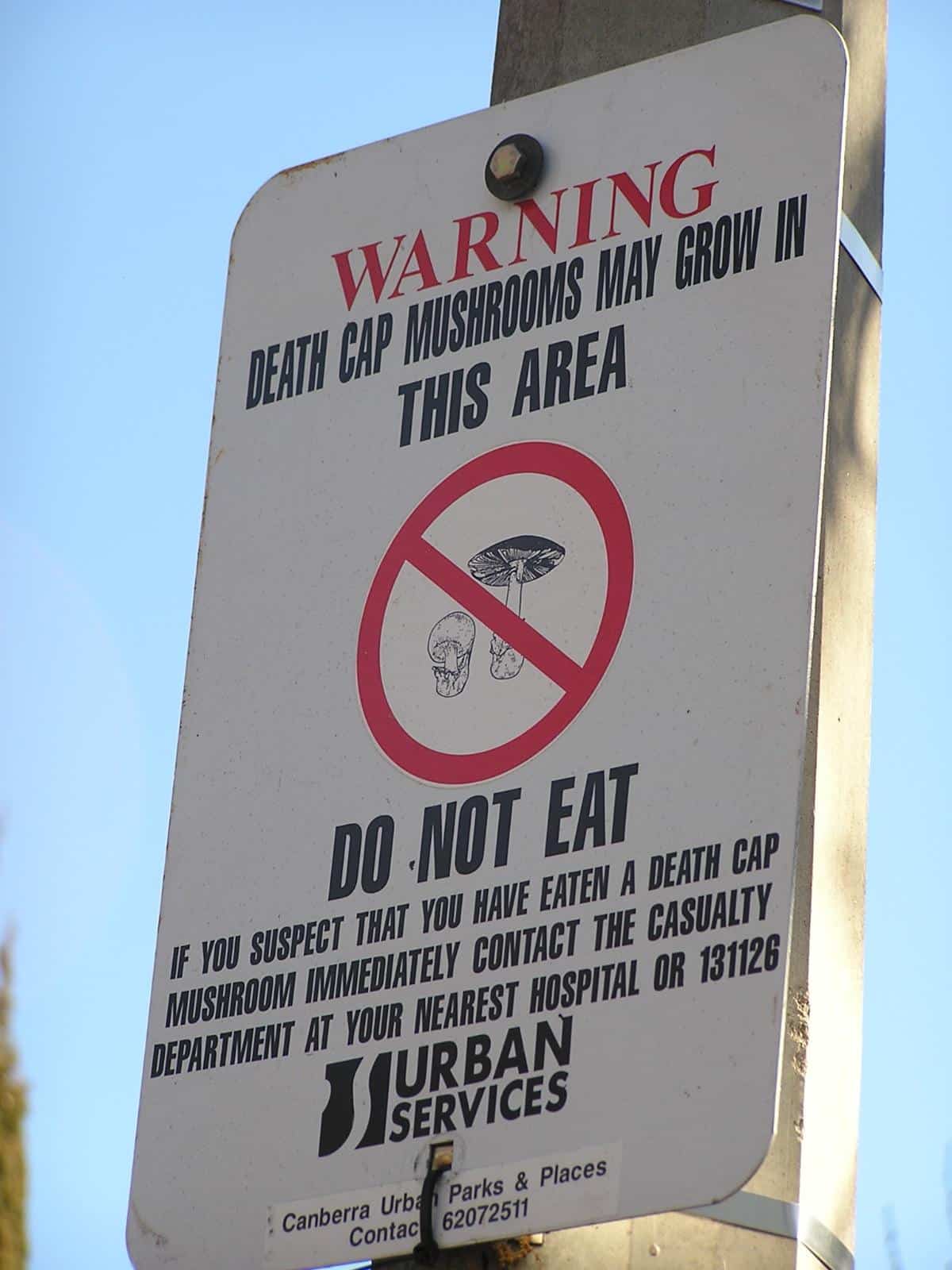
Other Infamous Amanitas
No page on poisonous mushrooms would be complete without discussing the death cap’s deadly cousin, the destroying angel.
The term “destroying angel” actually refers to a few all-white poisonous mushrooms in the Amanita genus. They are:
- Amanita bisporigera in Eastern North America
- Amanita ocreata in Western North America
- Amanita virosa in Europe
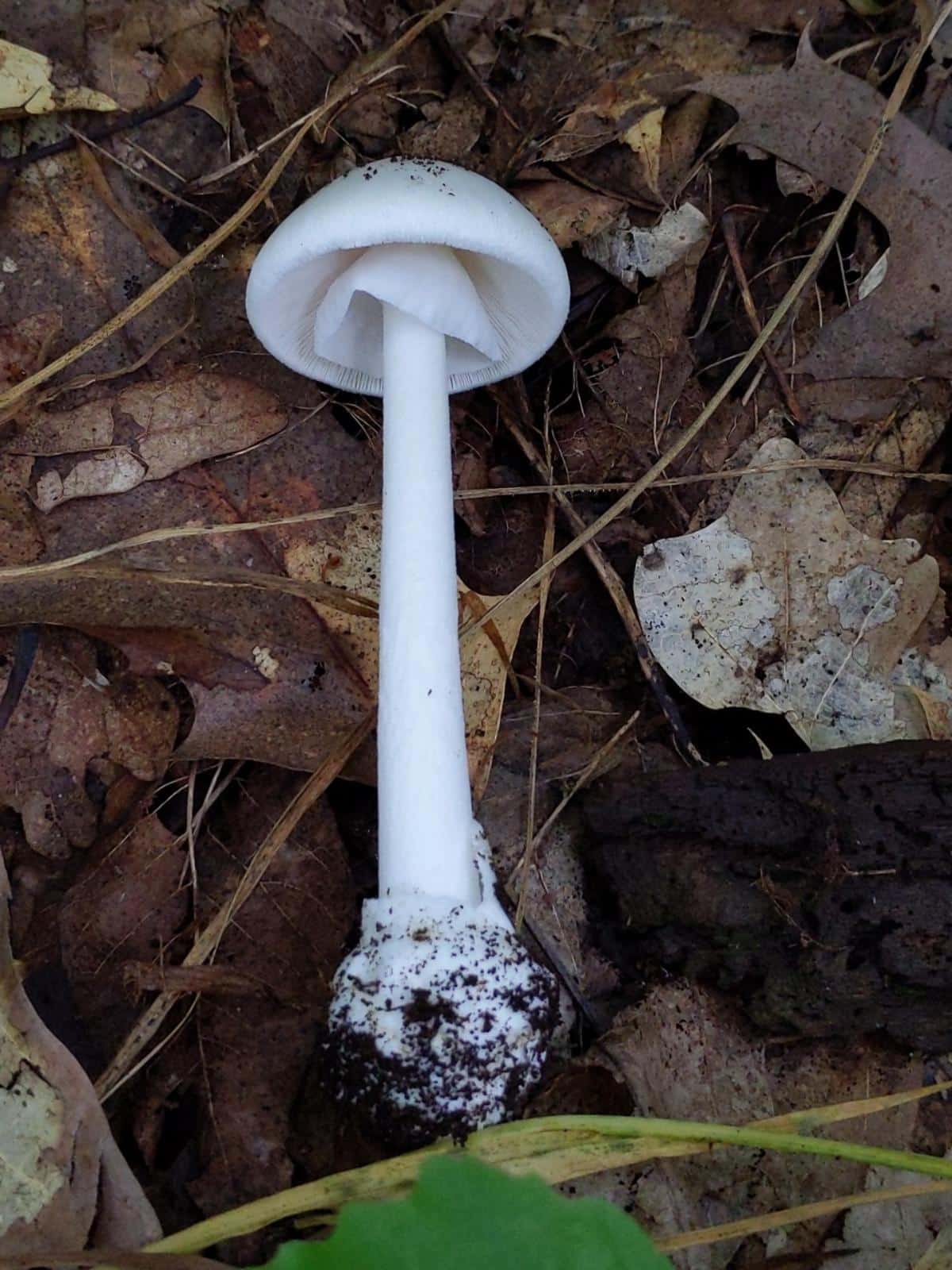
Destroying angels are sometimes mistaken for edible mushrooms such as young puffballs, button mushrooms, and meadow mushrooms. Thus it’s important to learn how to identify them.
The destroying angel is very similar to the death cap in terms of identification. The biggest difference is that they’re all white, with no green or yellow tint. They’re recognized by their rounded base, white color, and smooth cap. One bite of these may contain enough amatoxins to kill!
Of course, not every species in the Amanita mushroom genus is poisonous. Some, such as Amanita caesarea (Caesar’s mushroom), are edible. Yet given the danger involved in eating the wrong amanita, it’s best to avoid the genus entirely unless you really know what you’re doing.
It’s important to learn how to recognize Amanitas (especially the death cap and the destroying angel) if one is going to start eating wild mushrooms. Proper knowledge can prevent a fatal mistake!
Be safe!
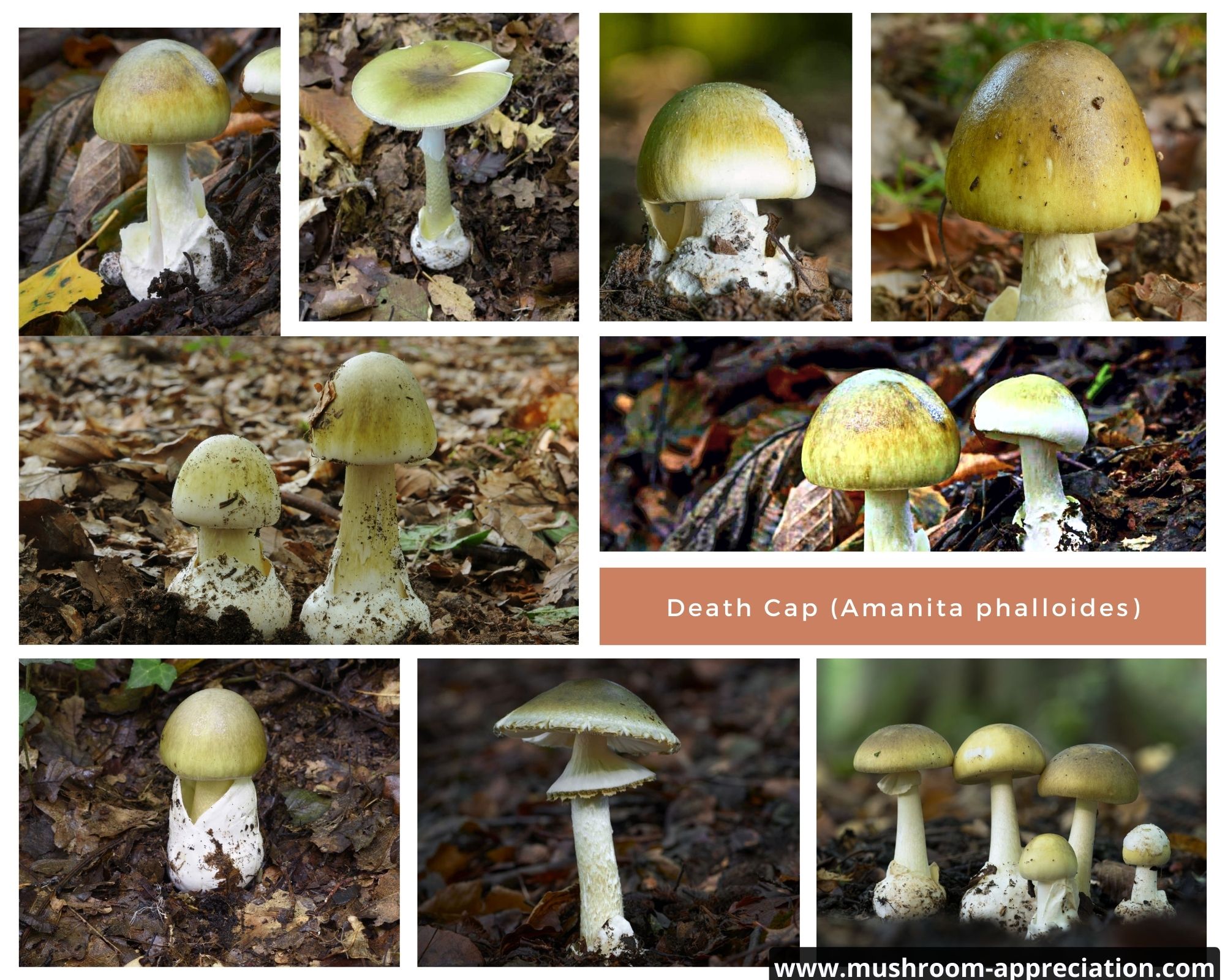
Common Questions About Death Cap Mushrooms
Can you survive eating a death cap mushroom?
Yes. Read the article linked above in the news section about the woman from Newport, Rhode Island who ate one and lived. Survival is a matter of luck, dedicated doctors, and catching it in time.
Many people don’t survive eating a death cap due to the extensive liver and kidney damage.
Is it okay to touch a death cap mushroom?
Yes. All mushrooms are safe to touch. They are only toxic when you ingest them. So, don’t put it in your mouth and you’ll be fine.
Of course, for kids who like to put their hands in their mouth, this is problematic. It’s best for kids to wear gloves unless they’re good about keeping their hands out of their mouths and washing them after being in the woods.
While it is highly unlikely much toxin would be transmitted from putting ones hands in their mouth after touching a death cap, it’s best to not take chances. A child’s small size means it takes less toxin to affect them.
Does the death cap taste bad?
Nope. They taste fine, according to those who have tried them. So, taste isn’t going to be any indicator of edibility here.

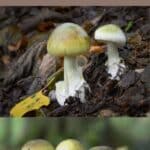
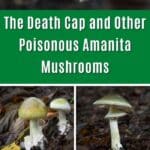
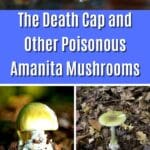
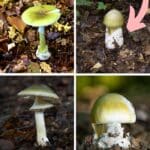
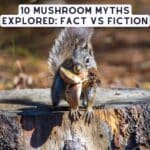
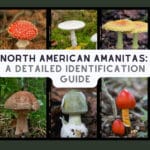
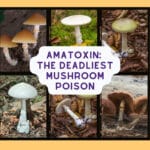
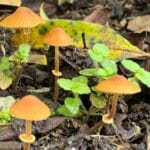
Sherrie Brandt
I found a large baseball sized mushroom in my yard and I’m having trouble identifying it. It is actually round like a baseball and white in color.
If you could help identify it I would appreciate it.
Jenny
Sounds like it might be a puffball? https://www.mushroom-appreciation.com/puffball-mushrooms.html
You can post pics in our facebook group — make sure you read the featured post and post all the info needed
Randy
Hi Jenny!
I have a LOT of mushrooms growing in my yard with no trees nearby, just like in a meadow. They all have a skirt or ring about 1/2 to 1 inch below the cap but also have speckles on top. They also have a bulbous base in the ground. I have pets and there are so many of these springing up I am worried. I do not use Facebook is there another way to send pictures of them to see if they are Death Caps or Amanita? Thanks mMuch!
Jenny
I only do Ids through the facebook group. But, based on your description and how much these mushrooms love to fruit in yards, I’d start by looking at the false parasol — https://www.mushroom-appreciation.com/toxic-false-parasol.html